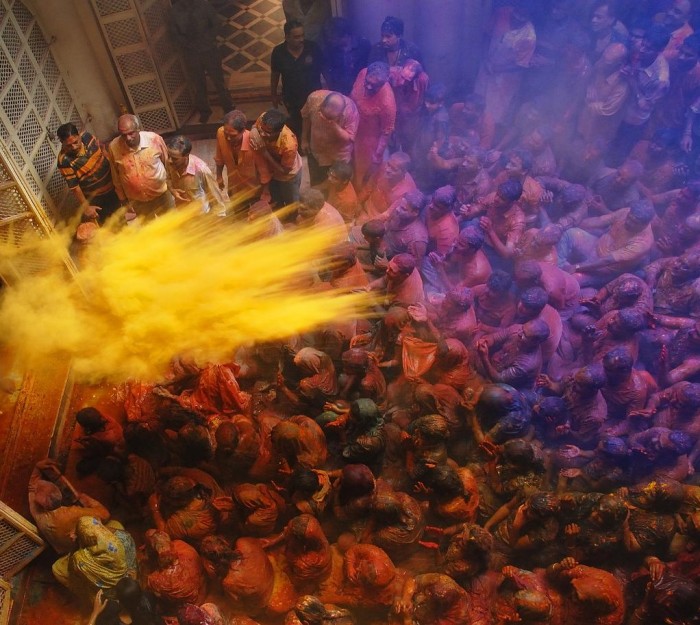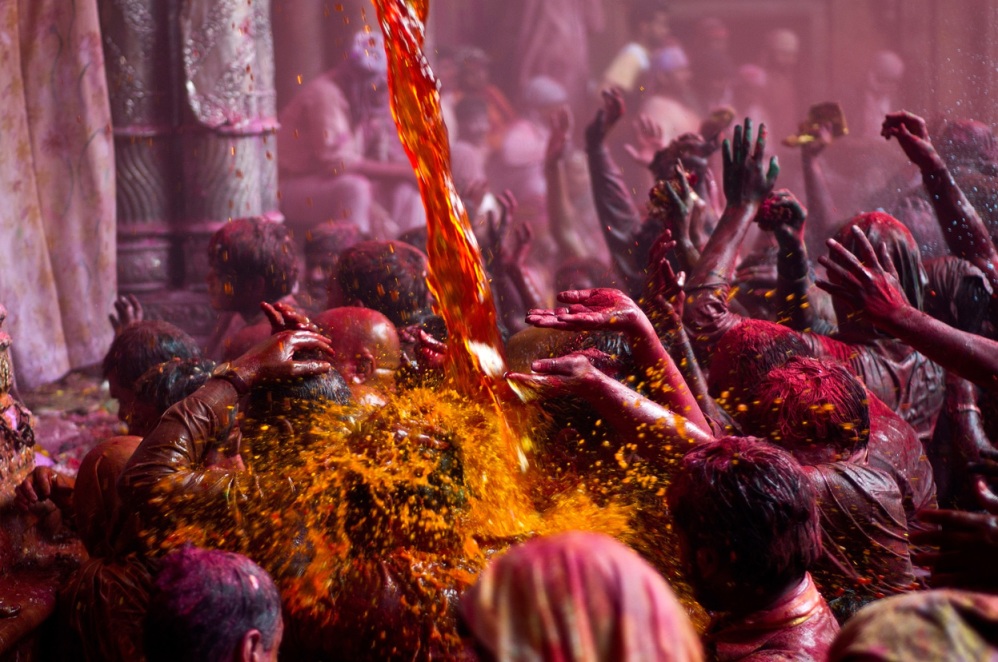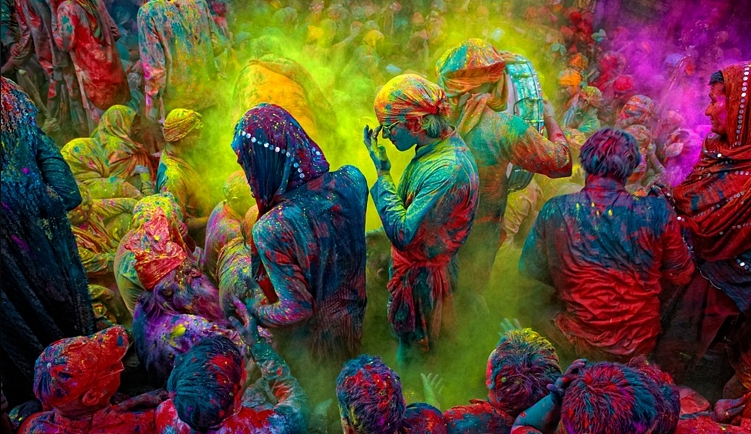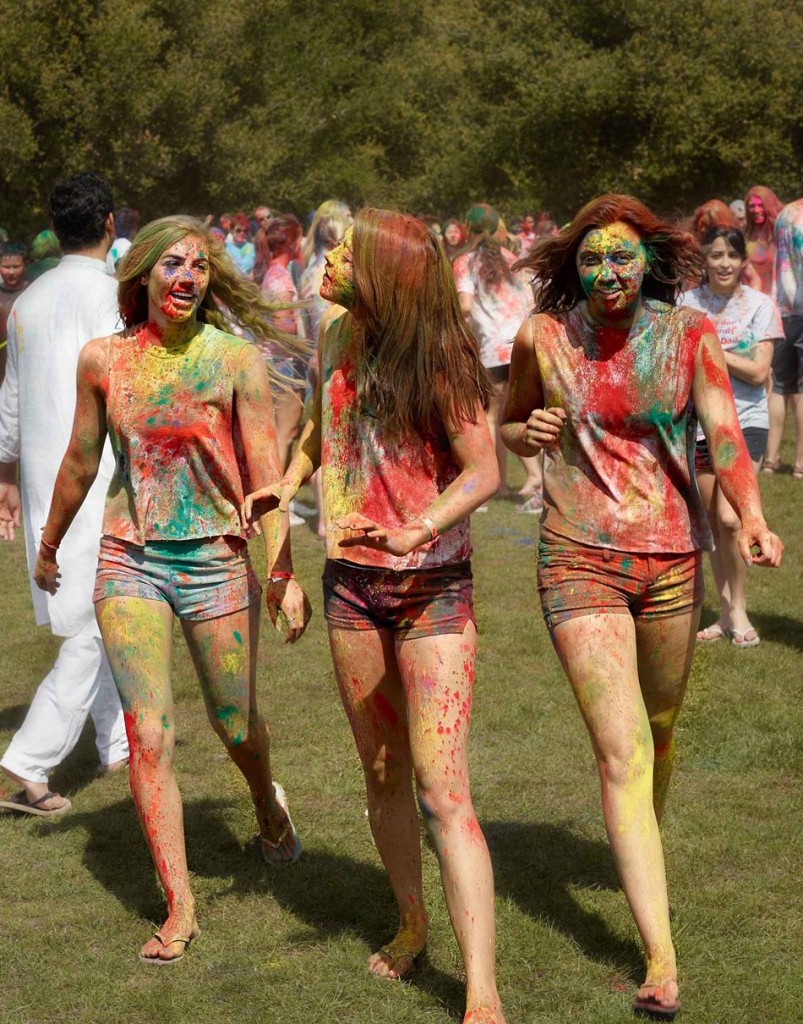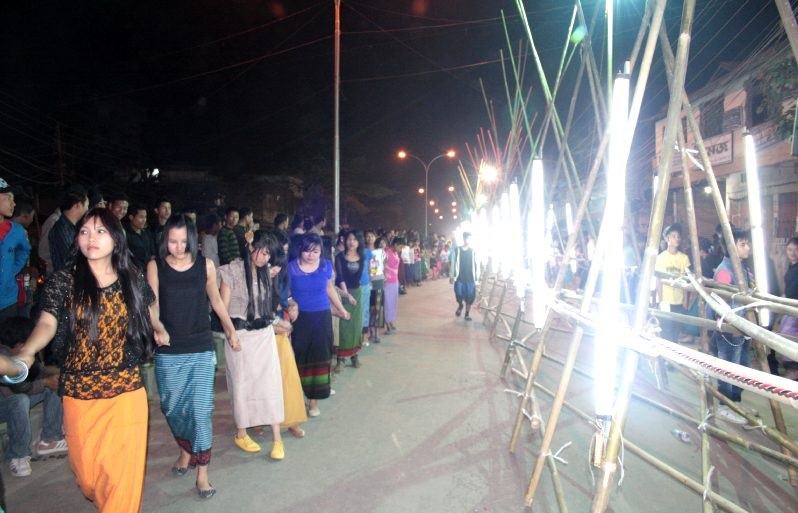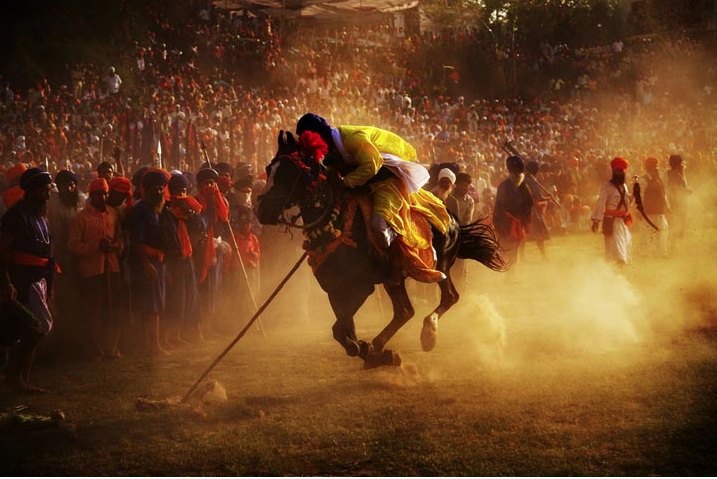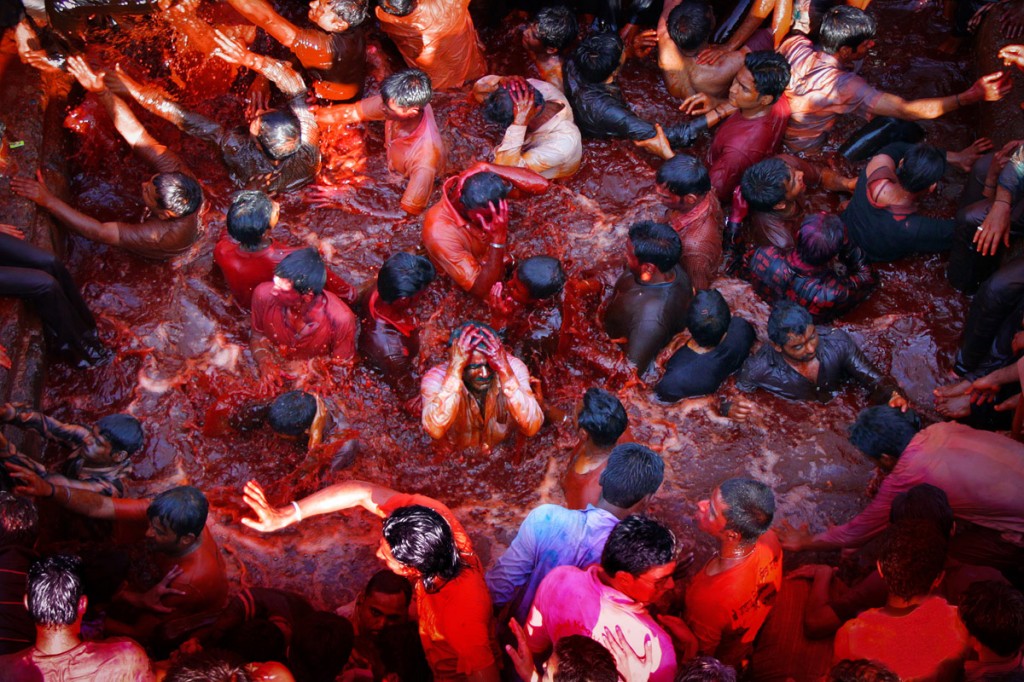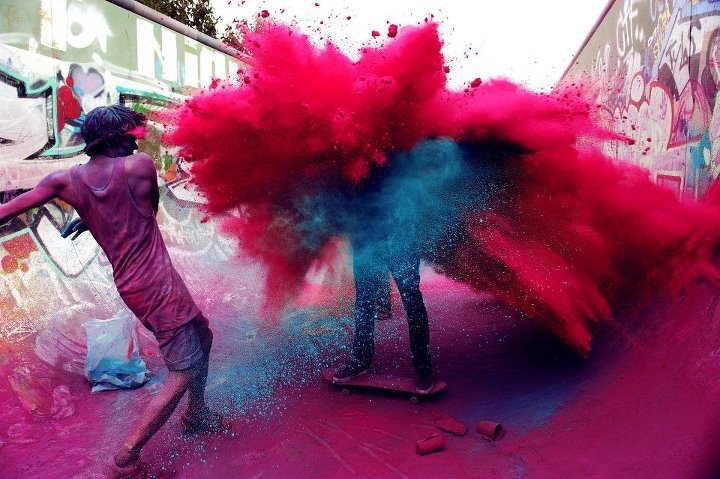Holi is celebrated throughout India with immense joy and fervor. The day of Phalgun purmina according to the lunar calendar of the Hindus is celebrated as Holi and marks the end of the winter season. Though the festival is celebrated in most parts of India, each part of the country have their own regional influence in the rituals and culture.
North India – Mathura and Vrindavan
Source – http://bit.ly/1iwhAHQ
Northern part of India celebrates Holi more in a grand manner when compared to the South. The most traditional form of Holi celebration is done in Mathura and Vrindavan, located four hours from Delhi. Mathura, the place where Lord Krishna was born and Vrindavan, the place where he was brought up are the main venues for Holi celebrations. The celebration preparations get underway forty days before the day of the festival on Vansant Panchami. Lord Krishna who was jealous of Radha’s fair complexion compared to his own darker complexion applied color on Radha as a mischief. Coloring their beloved on Holi is deemed an expression of love. The legend of the love story between Radha and Krishna are closely related to the celebrations of Holi and is hence celebrated with great fervor in these places.
Dol Jatra – West Bengal
In West Bengal, the eastern state of India, the Holi celebrations are different and interesting. Dol Jatra (the festival of swings), as it is called locally is celebrated with idols of Krishna and Radha placed on swings and are swung by devotees on turn. Abeer (Colored powder) and colored water are sprayed at each other while women devotional songs and traditional dancing around the swings. However, as times are changing, this tradition is being lost gradually and a modern tradition of playing with colors along with street processions with music and drums are taking precedence in Bengal. The celebration of Holi as Basant Utsav was started by Bengali poet and Nobel Laureate Rabindranath Tagore in Shantiniketan where it is celebrated with great enthusiasm. In Bengal, the date of Holi generally falls a day before the celebrations are to take place in rest of India.
ODISHA
Source- http://bit.ly/18xkyZL
The tradition of Holi celebration in Orissa is almost similar to that in Bengal but for a single difference. Instead of Radha and Krishna idols, the idol of Lord Jagannath, another form of Lord Krishna is placed on the swings. Games such as Dandhi Kela are played and a special tent to house the palanquin at night is erected and called ‘jhoolan mandap’.
Delhi
Source- http://bit.ly/1C85dLm
Delhi with its amalgamation of cultures and traditions witnesses virtually every aspect of Holi celebration from different parts of India. Feasts, dancing, music and parties are held to celebrate the festival. Abeer, applied as tilak is used for greeting people and bonfires and Holika are lit on the eve to celebrate the victory of good over evil. The Prime Minister and President of India also celebrate Holi with great fervor at their residences.
North East India – Manipur
Source- http://bit.ly/1Dl58iS
In the Northeastern state of Manipur, the Holi celebrations are most interesting. Here, the celebrations begin on the day of Holi and go on for six days. The Yaosang festival of Manipur that dates back a hundred years was amalgamated with the celebration of Holi after the introduction of Vaishnavism in the 18th century. A tradition of preparing a thatched hut made of hay, twigs and sticks are built and set ablaze to mark Holi. ‘Thabal Chongba’, a traditional form of Manipuri dance associated with this festival is performed on all six days. Thabal means moonlight and chonga means dance in the local language.
Holla Mohalla – Punjab
Source- http://bit.ly/1DCOa26
Holla Mohalla, as it is called in Punjab, the festival is celebrated by the Sikhs in their own style and elan. Lip smacking food, sweets are an essential part of the festivities. The Punjabis thpugh, do not follow the tradition of bonfire. Anantpur Sahib where the late Guru Gobind Singh, the tenth and last Guru, instituted Pahul (the baptism of the kalsas), militarized his followers into the order of Nihangs (Warrior-mendicants) and elected the Panj Pyare (the beloved fire), the festival is celebrated with gusto. Martial arts and other spectacular art forms of dare-devilry are performed by the Nihang Sikhs. A community feast, Langar, is open throughout the day for everybody.
Rajasthan and Maharashtra
Source- http://bit.ly/1E4VKoH
The vibrant colorful state of Rajasthan celebrates Holi much in the same way as it is done in Mathura. On the eve of the full moon, huge bonfires are erected and the remnants of winter such as dried leaves and twigs are thrown into the fire. On the day of Holi, gulal is applied on each other to mark the festival. The royals of Rajasthan also join the festivities while mingling with commoners. That is the beauty of this festival which goes by the famous saying, “bura na mano holi hai”. Mali Holi, the holi tradition among the gardener community is such that the men color the women with water and women in turn retaliate by hitting them with sticks. For more than 300 years, the ‘Harsh’ and ‘Vyas’ community have been celebrating Holi by throwing water at each other’s back forcefully. Dolchi Holi, as it is called is celebrated in the Bikaner district of Rajasthan since a vessel, ‘dolchi’ made especially for this event using camel skin is used.
In Maharashtra, the festival is called Shimga or Rangpanchami. Breaking the pot, “Dahi handi” is a famous event during Holi where young men break pots of butter-milk hung at a height while color water is constantly poured on them.
South India
Source- http://bit.ly/1DCPtOp
In the southern states, Holi is not celebrated as grandly as in the rest of the parts of India. In Tamil Nadu, Holi celebrations revolve around the Legend of Kama Deva, the lord of love. It is called Kaman Pandigai or Kama-Dahanam and is known as a festival that celebrates love. In Andhra Pradesh, there is an increased feeling of communal harmony. Merry making is done by playing with powder colors and seeking the blessings of elders by putting Abeer on their feet. The Banjara gypsies in Andhra Pradesh perform graceful dances and celebrate the festival in their own way.
